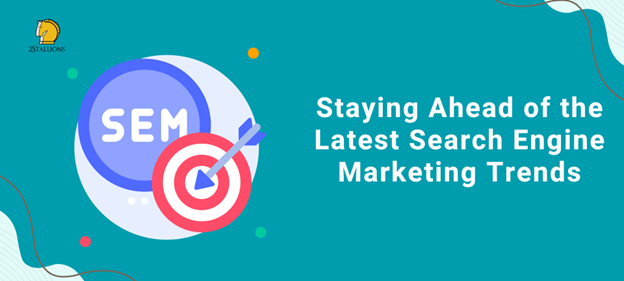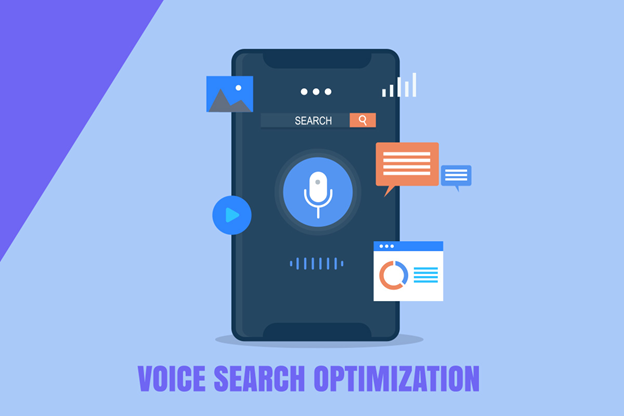SHARE

Search engine marketing (SEM) is an ever-evolving landscape. As digital marketers, we must continually adapt and innovate to stay ahead of the curve. In this comprehensive guide, we delve into the latest trends that are shaping the SEM world and provide insights on how to leverage them for your business.
Understanding the Importance of SEM
Before delving into the latest trends, it’s crucial to understand why SEM is so important. SEM is a powerful digital marketing strategy that involves promoting websites by increasing their visibility in search engine results pages (SERPs). It combines both paid and organic tactics to drive traffic, increase brand awareness, and ultimately, boost conversions. With the majority of online experiences beginning with a search engine, SEM has become an indispensable tool for businesses. It offers a unique opportunity to connect with potential customers at the exact moment they are looking for your products or services. However, to truly reap its benefits, you must stay updated with the latest trends and best practises.
Latest Trends in SEM
Source:Difference between Artificial intelligence and Machine learning – Javatpoint. (n.d.). www.javatpoint.com.
Artificial Intelligence and Machine Learning
Artificial intelligence (AI) and machine learning are increasingly being integrated into SEM. These technologies are helping marketers to automate tasks, analyse data more efficiently, and deliver more personalised experiences. Google’s AI algorithm, RankBrain, for instance, is used to interpret search queries and deliver more relevant search results. Machine learning, a subset of AI, is also playing a significant role in SEM. It allows marketers to analyse vast amounts of data and identify patterns that humans might miss. This can help in refining keyword strategies, optimising bids, and improving ad copy.
Voice Search Optimisation
With the rise of smart speakers and voice assistants, voice search is becoming increasingly prevalent. This trend is changing the way people search for information and interact with brands. As a result, marketers need to optimise their content for voice search to stay competitive. Optimising for voice search involves using long-tail keywords and conversational phrases that mimic natural speech. It also requires providing quick, concise answers to common queries and ensuring your website is mobile-friendly, as most voice searches are conducted on mobile devices.
Mobile-First Indexing
Google’s shift to mobile-first indexing underscores the importance of having a mobile-friendly website. This means that Google predominantly uses the mobile version of a website for indexing and ranking. If your website isn’t optimised for mobile, it could negatively impact your search engine rankings. Mobile optimisation involves ensuring your website loads quickly on mobile devices, has a responsive design, and provides a seamless user experience. It also means optimising your content for mobile, including using shorter paragraphs and incorporating visual elements for easier consumption on smaller screens.
How to Leverage These Trends
Embrace AI and Machine Learning
Start by exploring AI and machine learning tools that can help automate and optimise your SEM efforts. These tools can help you analyse data, identify trends, and make data-driven decisions. They can also help you personalise your marketing messages and deliver more relevant experiences to your audience. However, while AI and machine learning can be incredibly powerful, they are not a substitute for human insight. It’s essential to combine these technologies with your expertise and intuition to create effective SEM strategies.
Source: Gupta, T. (2020, January 17). 7 Steps to Voice Search Optimization Best Practices in 2020. Brainpulse Technologies.
Optimise for Voice Search
Begin by understanding how your audience uses voice search. What questions do they ask? What phrases do they use? Once you have this information, you can create content that answers these queries and optimises for these phrases. Remember, voice search users are often looking for quick, concise answers. So, aim to provide clear, succinct responses to common queries in your content. Also, ensure your website is mobile-friendly, as this is a key factor in voice search optimisation.
Go Mobile-First
Ensure your website is mobile-friendly. This means it should load quickly, have a responsive design, and provide a seamless user experience on mobile devices. Also, optimise your content for mobile consumption. Use shorter paragraphs, incorporate visual elements, and ensure your call-to-action buttons are easily clickable on smaller screens.
Remember, mobile-first indexing doesn’t mean ignoring desktop. It’s about ensuring a consistent and high-quality user experience across all devices. So, while you should prioritise mobile, don’t neglect your desktop users.
Conclusion
Staying ahead of the latest search engine marketing trends is crucial in today’s digital landscape. By understanding and leveraging these trends, you can create effective SEM strategies that drive traffic, increase brand awareness, and boost conversions. Remember, the key is to continually adapt, innovate, and keep your audience at the heart of your strategies. Whether it’s embracing AI and machine learning, optimising for voice search, or going mobile-first, these trends offer exciting opportunities for businesses to connect with their audience in new and meaningful ways. So, don’t wait. Start leveraging these trends today and stay ahead in the SEM game.
Frequently Asked Questions About Search Engine Marketing
What is Search Engine Marketing?
Search engine marketing (SEM) is a digital marketing strategy used to increase the visibility of a website in search engine results pages (SERPs).
What is an Example of SEM in Digital Marketing?
Google Ads (formerly Google AdWords) is the most popular platform for SEM. These ads appear on the top of Google search pages.
What is SEM vs SEO?
Search Engine Optimisation(SEO) is focused on optimising a website in order to get traffic from organic search results. On the other hand, the goal of Search Engine Marketing (SEM) is to get traffic and visibility from both organic and paid search.
What is the Benefit of Search Engine Marketing?
One of SEM’s most significant advantages is brand recognition. Your brand will stand out more if you launch an SEM campaign. Audiences hear a story from your brand. The narrative must focus on your target market and how your company can assist them in resolving their issue.
What are the Two Types of Search Engine Marketing?
Search marketing has two main types: SEO (Search Engine Optimisation) and PSA (Paid Search Advertising).













